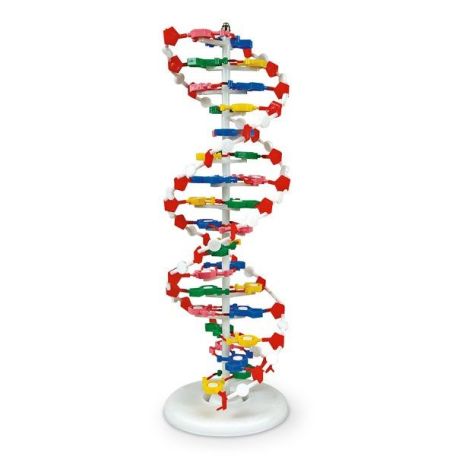A super-sized DNA model, pre-assembled and built to a scale of 10cm to 1nm.
Made of bright flexible plastic, the eye-catching model depicts a 16 base pair section of DNA. Standing an impressive 60cm tall on a solid plastic base.
The phosphate-deoxyribose backbone and the four bases are represented by custom plastic moldings that show the shapes of the molecules and illustrate the bonding between them.
The handedness of the backbone chains and the relative sizes of the major and minor grooves in the relaxed molecule are correctly shown. The model is supported by a central pillar which can rotate on a circular stand, and the phosphate and deoxyribose components of the backbone as well as the individual base pairs can be removed for separate examination.
A great educational DNA model, ideal for exploring the sequence of molecules required to build the DNA backbone in senior biology and chemistry classrooms! It's ideal for Kit includes deoxyribose molecules, phosphate groups and nucleotides.
Whether you are teaching biology, chemistry, biochemistry, forensics or genetics; this is a fun and practical addition to your secondary or tertiary science classroom!
What You Get
Kit contains:
- 5 x blue guanine bases
- 5 x yellow adenine bases
- 5 x red thymine bases
- 5 x green cytosine bases
- 20 x blue deoxyribose sugar molecules
- 22 x white phosphate group molecules
- 40 x thin white connectors
- 20 x thick white connectors

